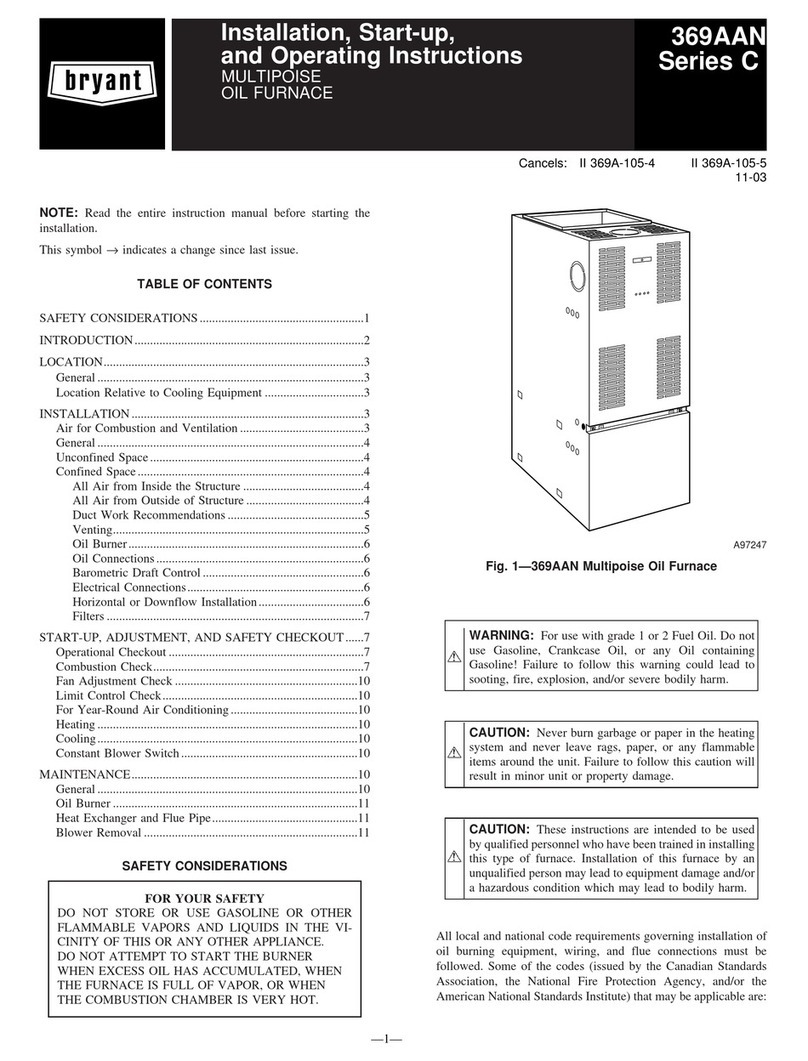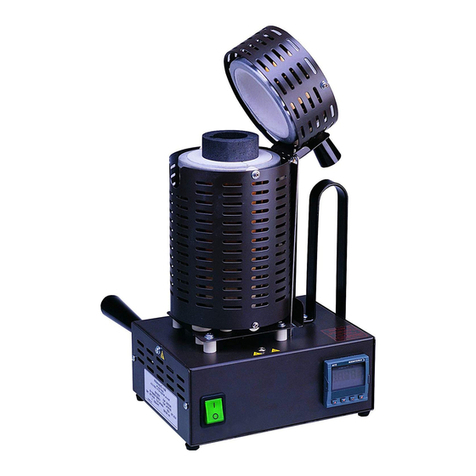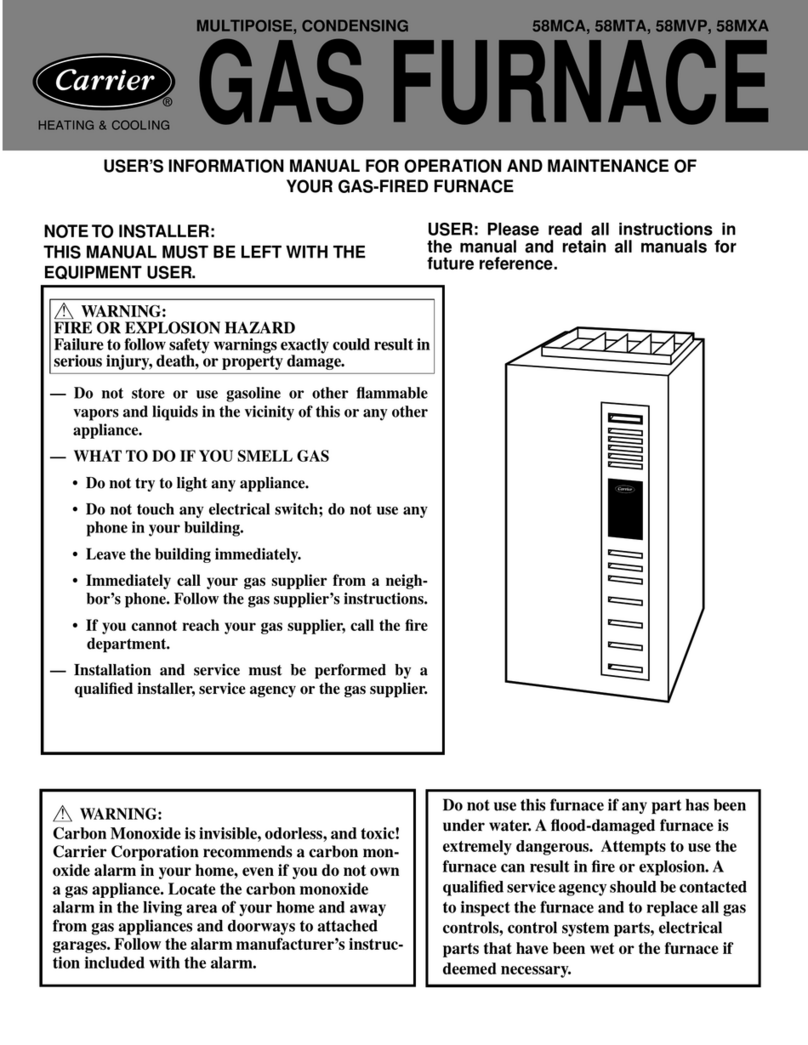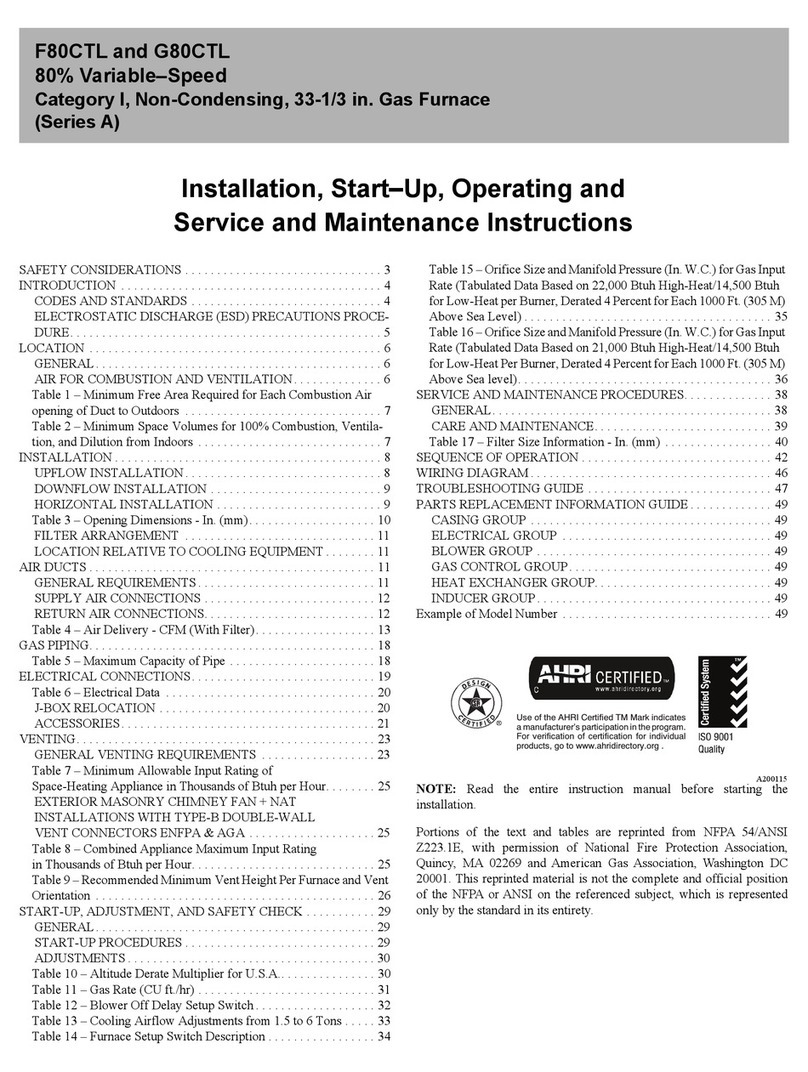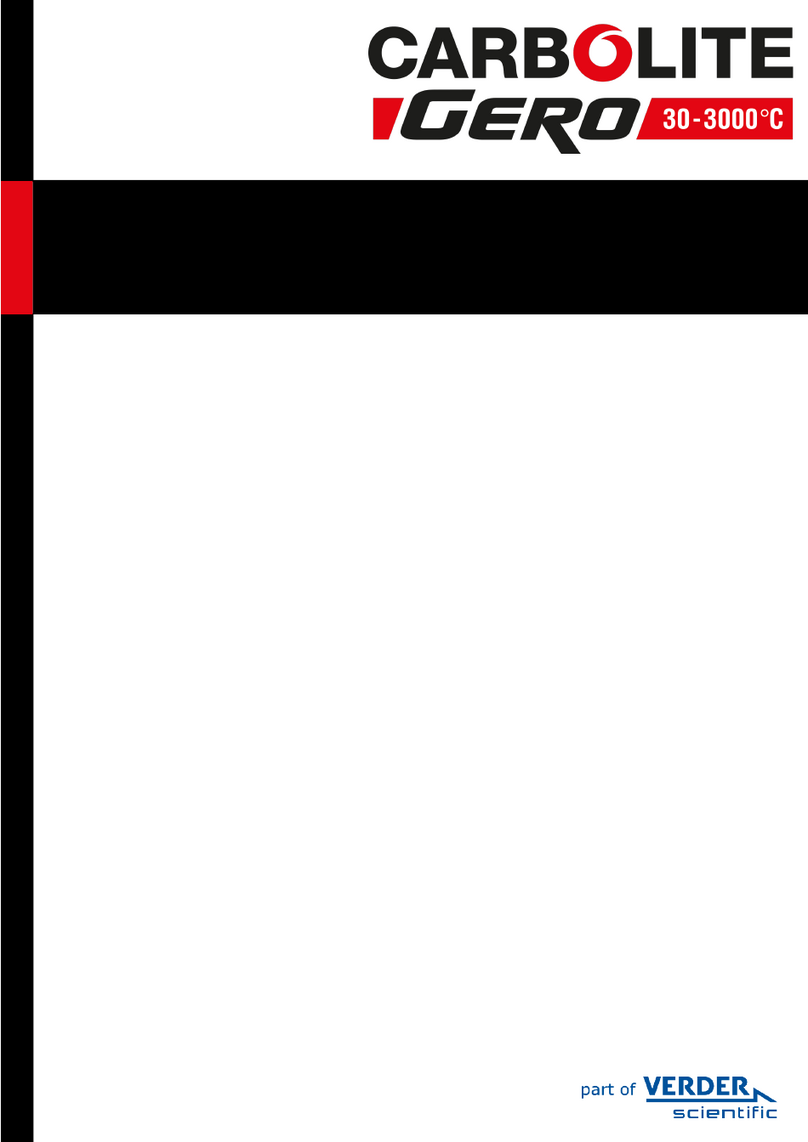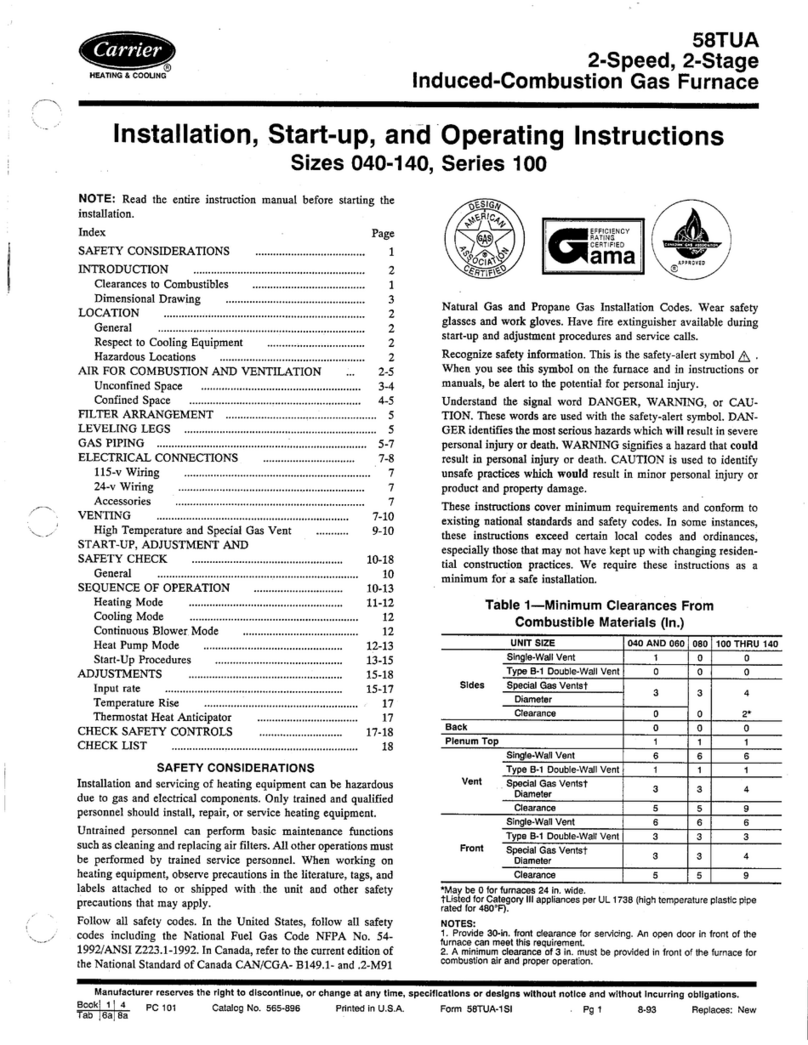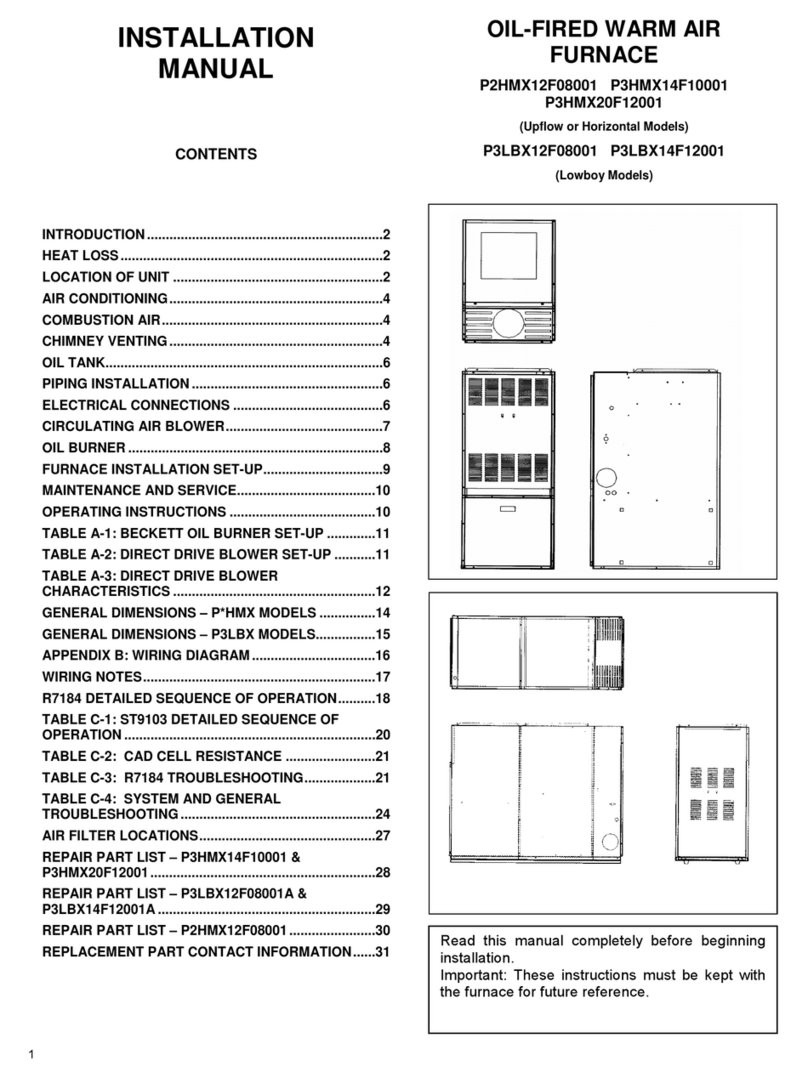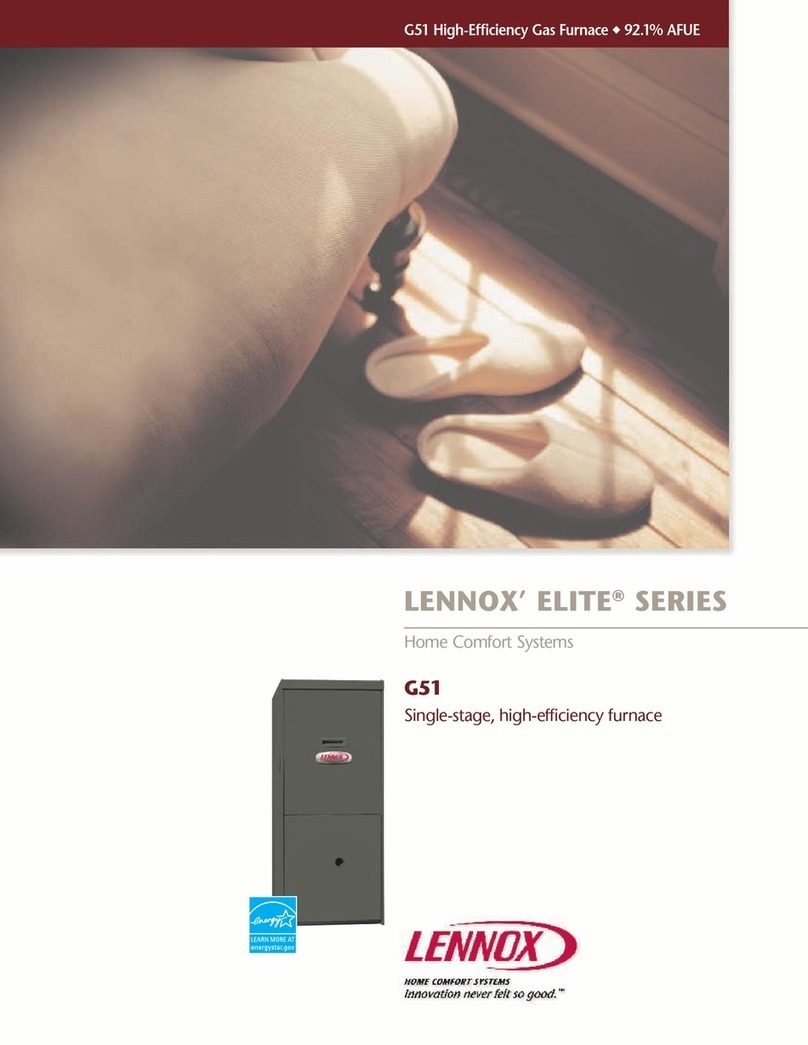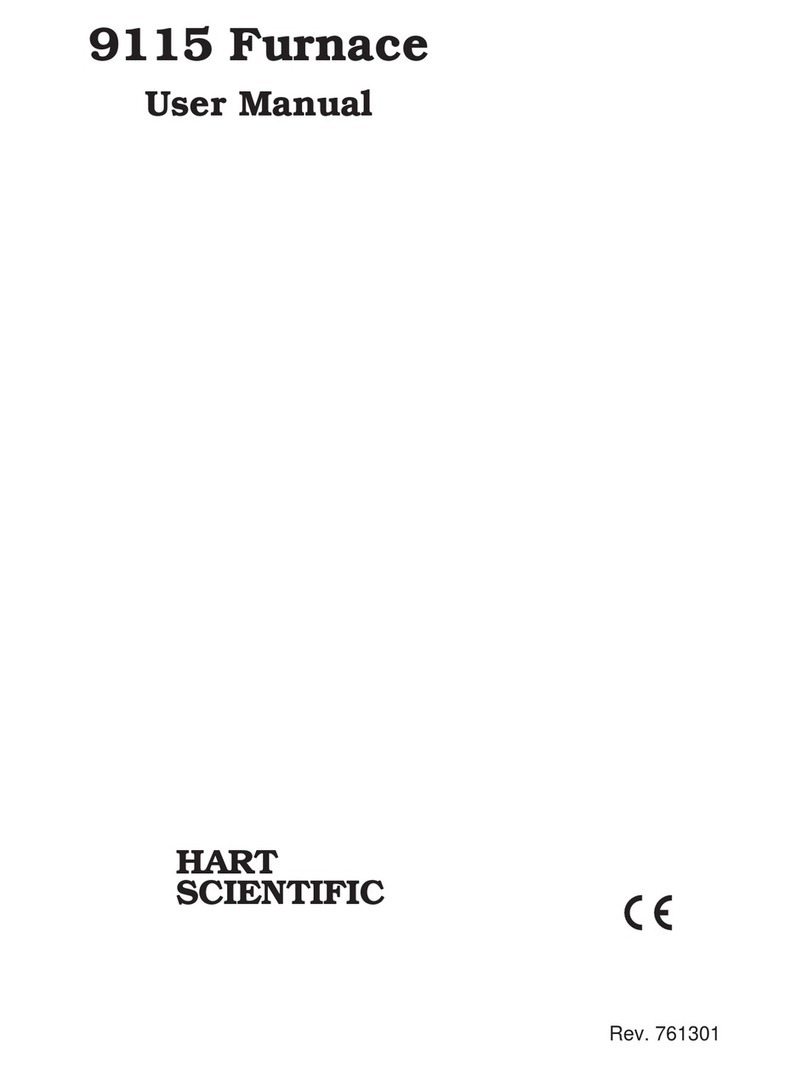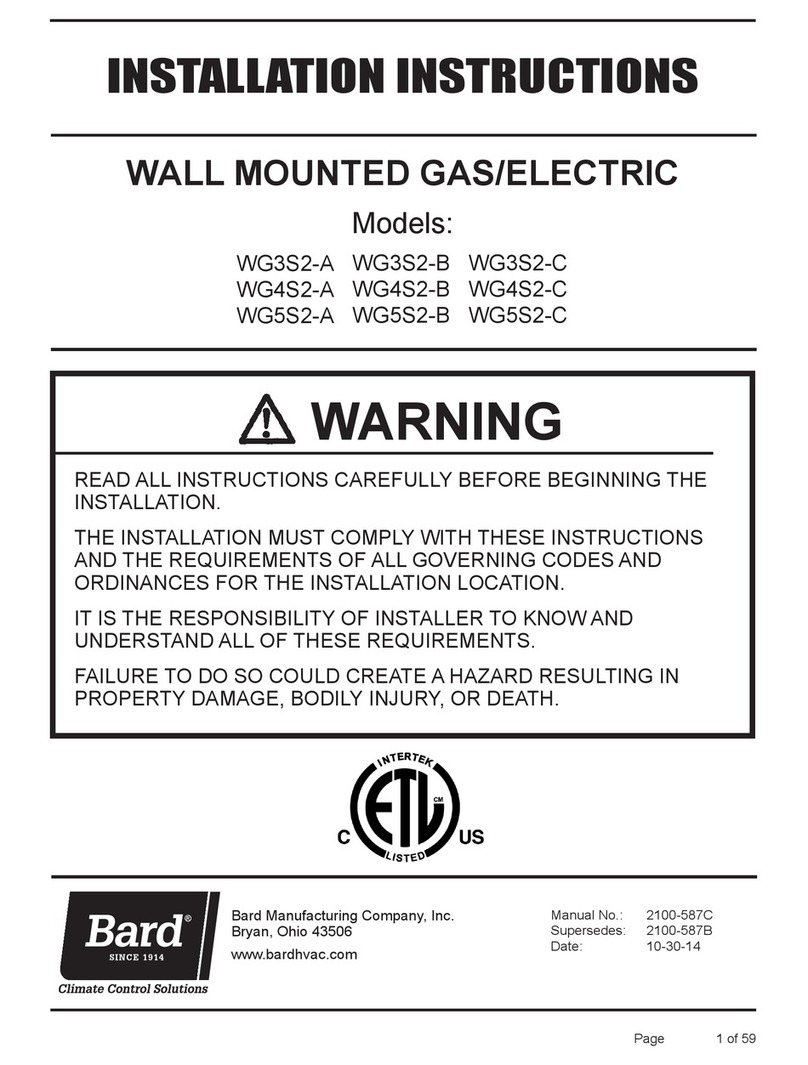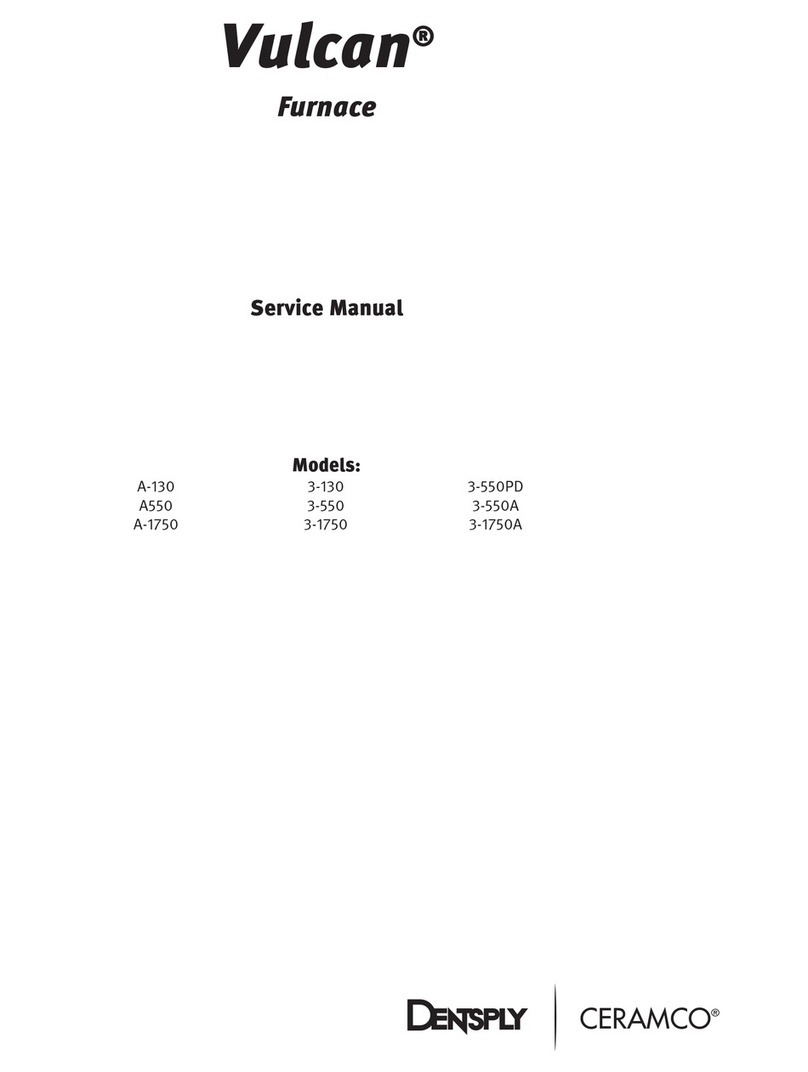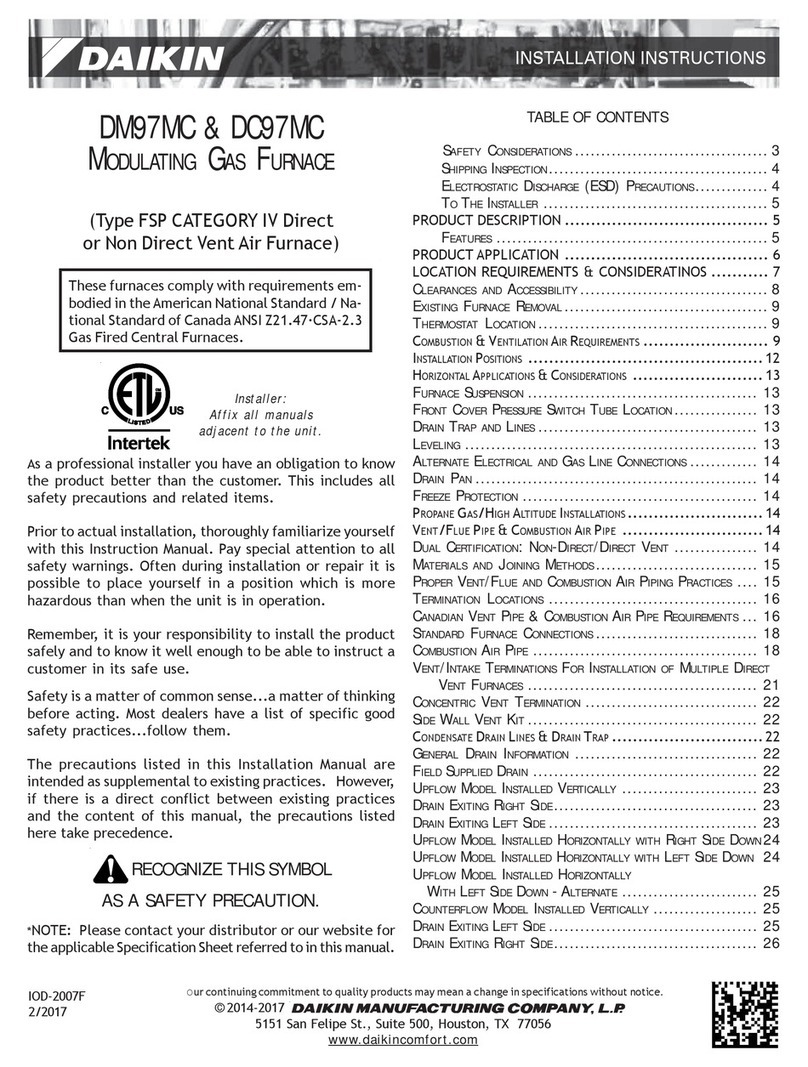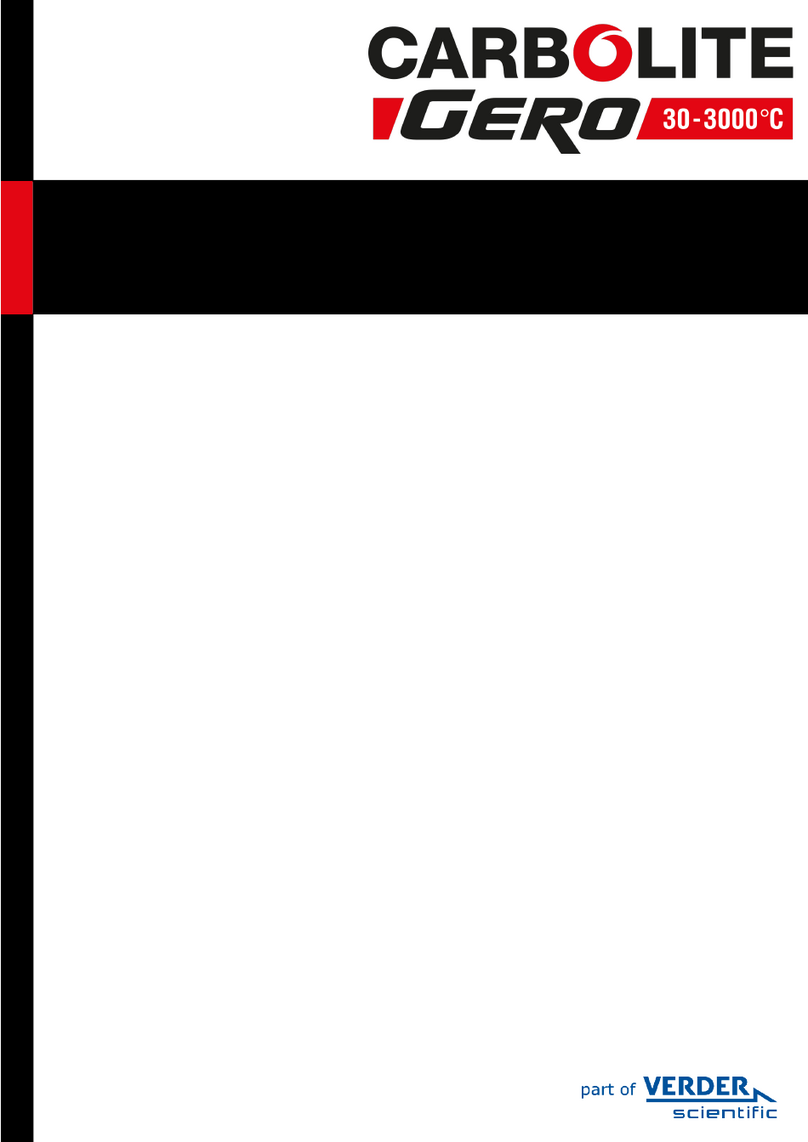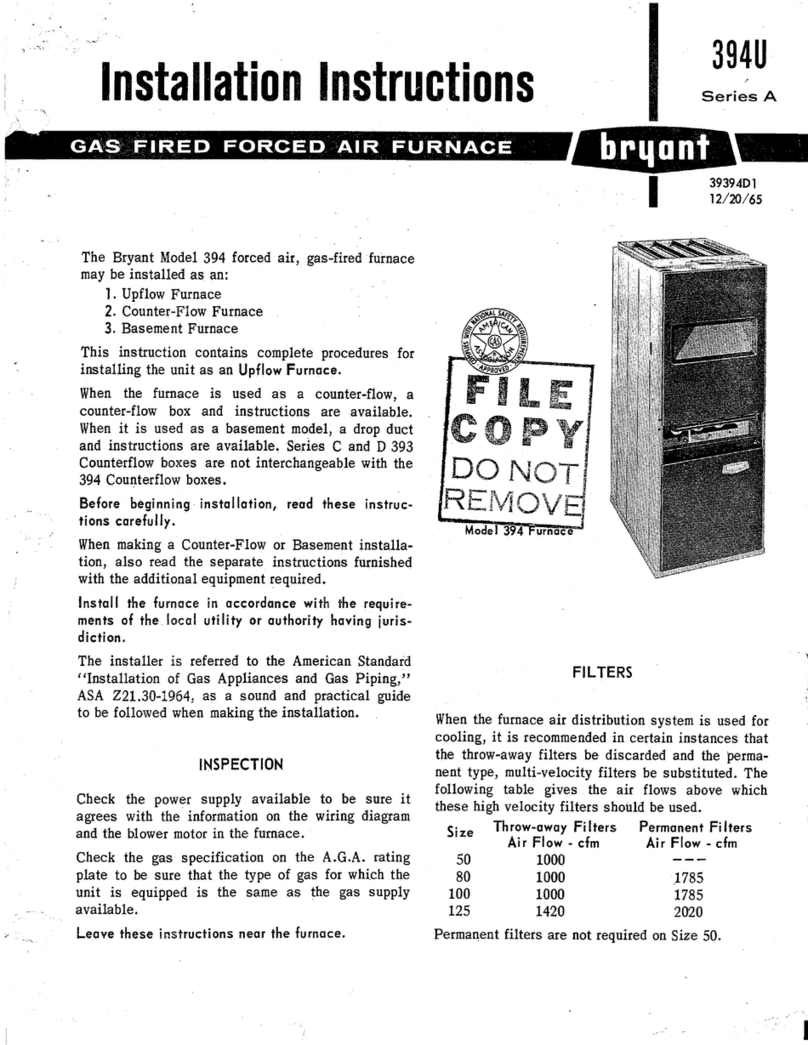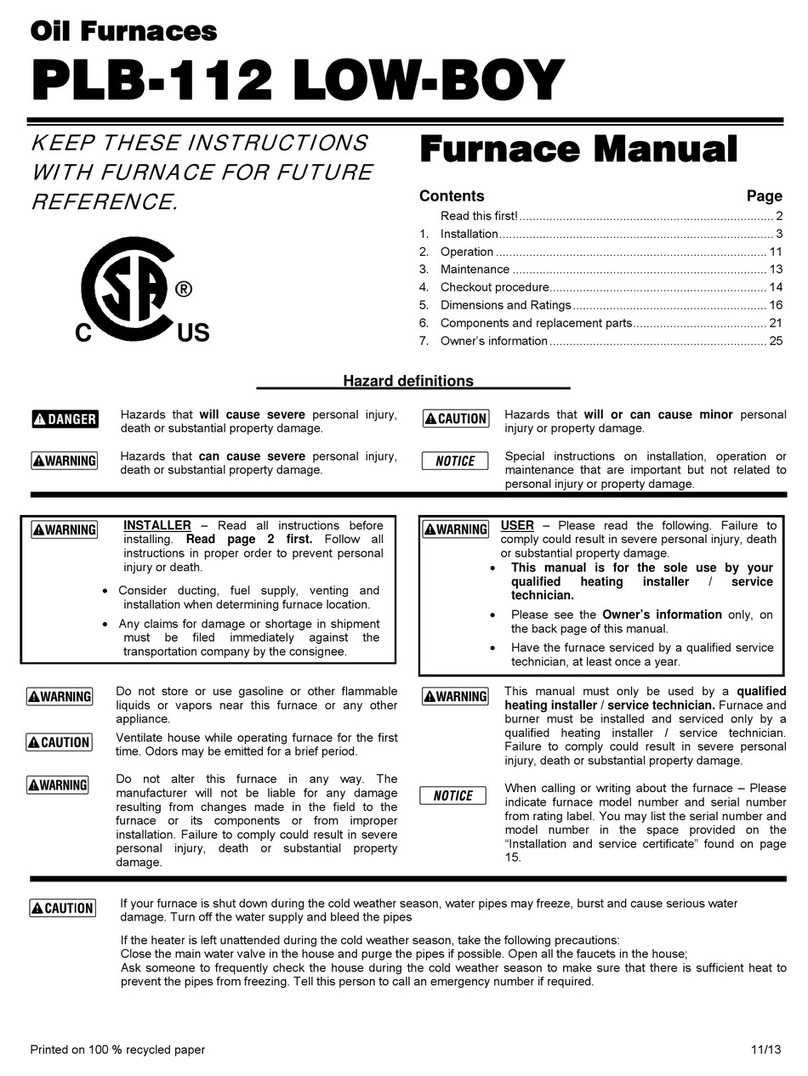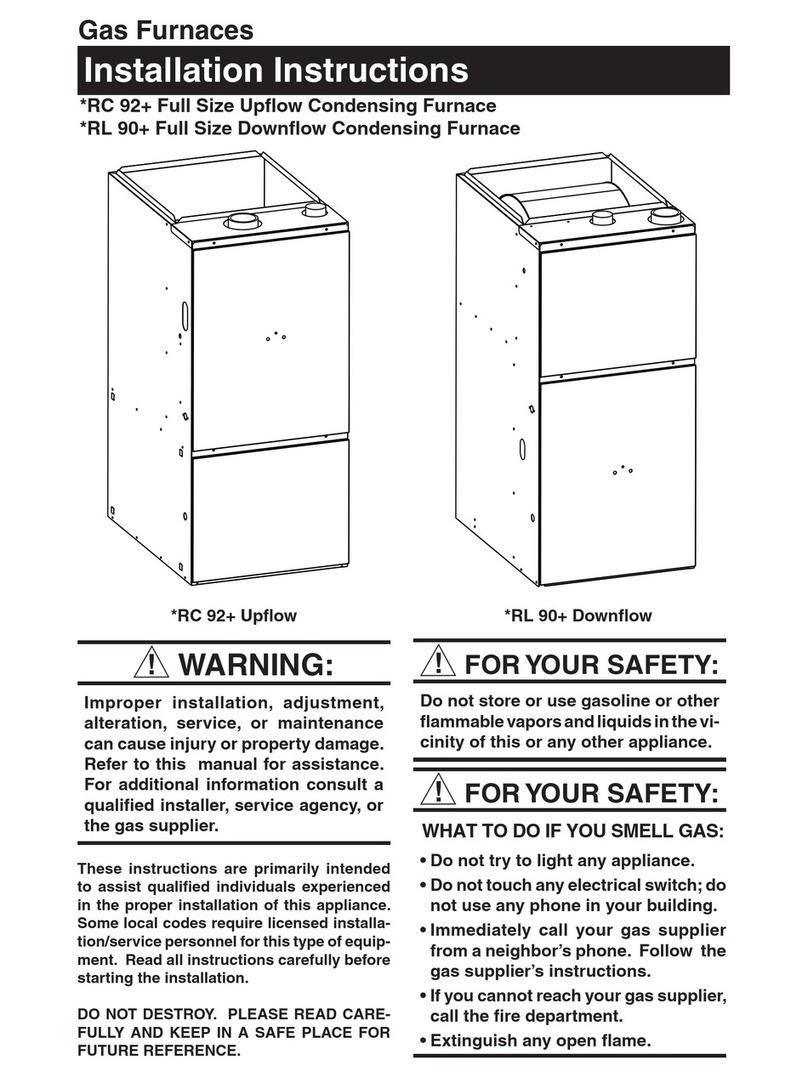
© 2008 Greenwood Technologies, LLC Page 11
2. Unloading and locating the furnace
CAUTION: These units are heavy! The Model 100 weighs about 2,450 pounds; the Model
200 weighs about 2,830 pounds; and the Model 300 nearly 3,700 pounds. Make sure you
have proper equipment and sufficient manpower to prevent injury or damage when
unloading and locating the furnace unit
When moving the furnace from the bottom, use a forklift with 5,000 lb or greater capacity and 5-6 ft. forks.
Center the forks under the chassis, with the forks spread to minimize the overhang on either side. Move the
loader as close to the furnace as possible without contacting
the rack or the front of the loader. Pick the furnace up by
keeping it level and lifting only as high as necessary to
move the unit. Do not accelerate or stop the loader
suddenly. Make slow and stable maneuvers with the
furnace on the forks.
CAUTION: Never stand in the path of the load
when lifting or moving the furnace, whether lifting
from the bottom or the top.
When lifting the furnace from the top, use the two forged
lifting eyes located at the top corners diagonal from one
another. These eyes are rated for a straight pull, which means they are to be used in a VERTICAL LIFT
ONLY. The use of a load spreader, or ―strongback‖ is required to properly rig the furnace for top lifting. The
lifting eyes must not be joined with slings or cables in any configuration that would pull and bend the lifting
eyes, or in any load direction other than vertical. Failure to observe this safe lifting requirement could result
in damage to the furnace or serious injury to personnel. Specified spreader bar lengths for Greenwood
Models 100, 200, and 300 are 54‖, 60‖, and 67‖ respectively.
WARNING: If you are not a professional rigger or do not have experience with portable
cranes, winches, hoists, or other lifting devices, and you have determined that a top lift is
required to place the furnace in its installed location, you should use an equipment or
machinery-moving company to set the furnace in its final location. If the furnace is
dropped, the refractory ceramic firebox can be damaged. An experienced rigger can ensure
that the furnace is safely lifted and set in place without damage.
The Greenwood furnace is certified for safety as an INDOOR APPLIANCE, so you can install it in a walk
out basement, shed, out-building or almost any location where the unit is sheltered from the weather and
insulated from freezing intake air. DO NOT install this furnace in a mobile home or trailer. As with any
furnace operated indoors, install a carbon monoxide monitor in the room where the furnace is installed.
NOTE: Installation must be completed in accordance with National Fire Protection
Association (NFPA) installation standards No. 89M, 90B, 211, 70 (National Electrical Code)
and Uniform Mechanical Code 913, 6-4 in states where applicable.
Place the furnace on a non-combustible surface, such as solid concrete or masonry. When deciding where to
place the unit, consider the location of your chimney, access to electricity, and the convenience of retrieving
and loading wood. In garages, the National Fuel Gas Code requires that the lowest point of ignition be
elevated no less than 18 inches above the floor, except where furnaces are installed in separate, enclosed
space and where combustion air is taken from outside the garage.
Check for clearances. Greenwood furnaces are tested to UL (Underwriters Laboratories) and CSA (Canadian
Standards Association) standards of safety for indoor appliances. As a result, you can install your furnace
with a minimum separation between the furnace and combustible surfaces. The following table and
illustrations show the minimum clearances to combustible materials.




















